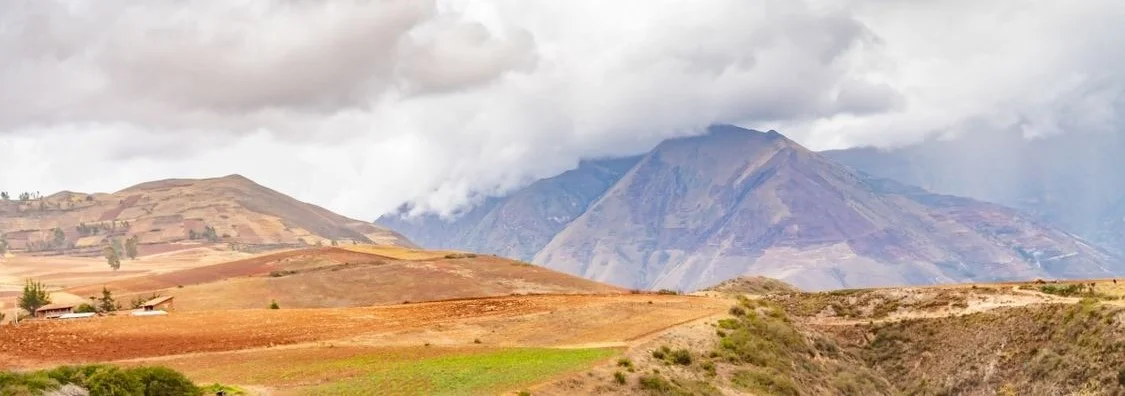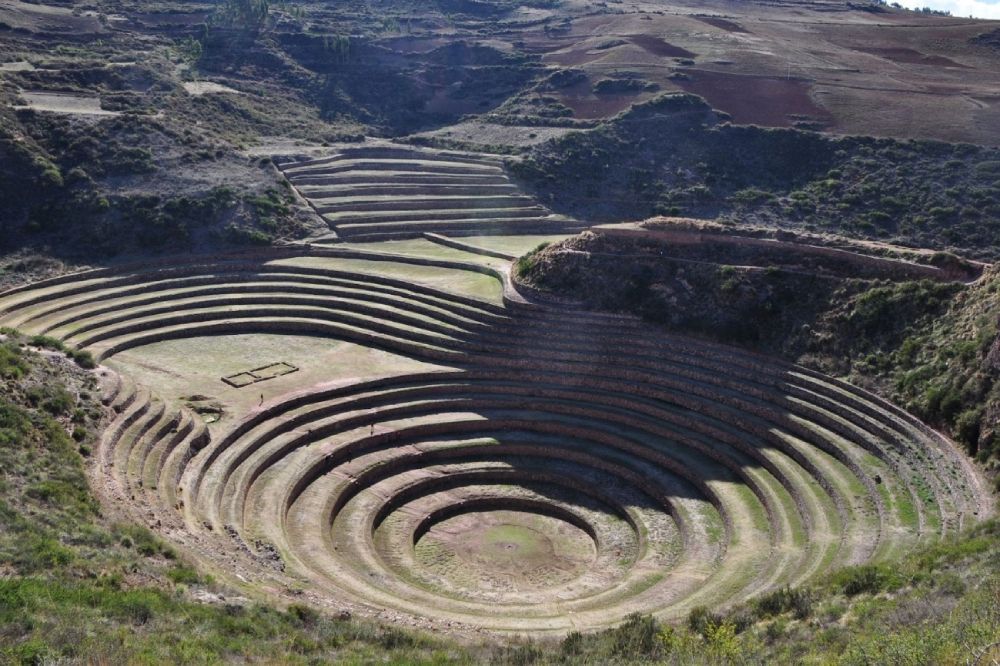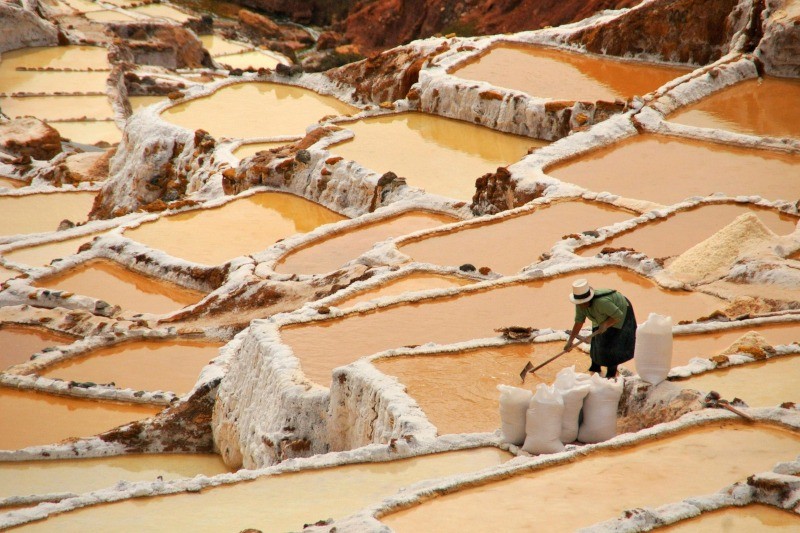
Maras and Moray Discover the Sacred Valley Ancient Wonders | Travel Blog
The Sacred Valley of the Incas located in the Peruvian Andes is a place that is full of history and culture. Its numerous treasures include such places as Maras and Moray which give us a vision of the ancient marvels of the Inca civilization. This paper discusses such interesting places, their historical importance and cultural heritage.
Another consequence of the ingenuity of the Inca people is the Maras salt mines which are also referred to as the Salineras de Maras. These salt pans are located at an altitude of approximately 3,000 meters above sea level and they were used since pre-Inca times. The salt extraction method has not changed much and the salt water is collected by thousands of terraced pools where the natural spring of water collects the salt. When the water evaporates, it is left with crystals of salt that are harvested by local families.
For travelers wishing to explore even more of Peru beyond Maras and Moray, Voyagers Travel offers inspiring itineraries that blend culture, nature, and adventure. The Peruvian Wonders Tour (10 Days), Discovering Peru Treasures (17 Days), and Peru & Galapagos Journey (16 Days) present travelers with distinct paths to explore South America through immersive and memorable experiences.
Table of content
- Introduction to the Sacred Valley.
• Inca Civilization Relation - Exploring Maras
• History and Cultural Importance
• The Role of Coca Leaves - Moray Agricultural Innovations
- The Inca Road System
• Ollantaytambo: An important Interrelation - Importance of Heritage
- Best Time to Visit
• Local Communities
• Altitude Acclimatization
• Conservation efforts - Cultural Initiatives in Sacred Valley
• Considering the timeless Heritage of Maras and Moray
Introduction to the Sacred Valley.
The construction of the Maras salt pans presents an advanced concept on the knowledge of natural resources and engineering. All the pools are properly located to get maximum exposure to the sun, so that the water can be well evaporated. The network of channels that circulate the spring water through the terraces shows how much the Incas were experts in terms of hydraulic engineering. This pre-historic infrastructure still serves perfectly, which is the testament of the resilience and prudence of Inca engineering technologies.
Salt was a valuable commodity in ancient times and the salt mines in Maras were very important to the economy of the Inca Empire. The mines supplied salt to be consumed, to be preserved and to trade. Even nowadays, the salt pools production is still sustaining the lives of most families in the area. The salt mines visit would provide the tourist with the opportunity to learn more about the old way salt was produced and how it is of significance to the local population.

Inca Civilization Relation
Salt was both an important and essential component of the Inca diet and a medium of exchange and a symbol of wealth. It had trade routes all through the Andean region which enabled cultural and economic exchange. The salt of Maras is commonly utilized today in high-end dishes, which shows that it is still significant and popular.
Exploring Maras
History and Cultural Importance
The families working in the Maras salt mines have been using their knowledge and methods over generations. Salt harvesting is a group endeavor, and families have some pools which they are in charge of. This is a manual process which requires close attention to be paid to the various steps of evaporation and to the harvesting of crystals of salt. In spite of it all, the community is proud and identifies with this work and this helps them to relate to their past history.
To the viewer, the salt harvesting process is an eye opener into the effort and talent put into it. An interaction with the local harvesters allows cultural experiences of the living history of the Sacred Valley.
Moray archaeological site is another wonderful place that is only a few miles off Maras that portrays the cleverness of the Inca people. The city comprises a row of concentric terraces, which are similar to an enormous amphitheater. The Incas used these terraces as their laboratory in agriculture whereby they tested various crops and agricultural methods.
The terraces at Moray were extremely designed to produce a diversity of microclimates. The terraces have a different temperature at each level of the terraces, thus enabling the Incas to recreate different growing conditions. This helped them to grow a diverse variety of crops such as potatoes, maize and coca leaves that were not only important in their culture but also diet.

The Role of Coca Leaves
The coca leaves more specifically bore great cultural and spiritual importance to the Incas. They were applicable in religious practices, and also in medication. Chewing coca leaves also assisted Incas to overcome the Andes highlands.
The agricultural laboratory of Moray used by Incas proves their advanced skills in environmental science and agronomy. Through experimental planting in various microclimates, they were in a position to come up with resilient strains which could be cultivated in the various regions of the Andean. This was a scientific way of agriculture that guaranteed food security and led to the growth of the empire.
The circular terraced Moray site continues to be a visual marvel but the circular form is also functional and allows circulation of air and temperature control. This is a new technique that points to the capacity of the Incas to integrate engineering and nature, maximizing agricultural production.
Moray Agricultural Innovations

The techniques of agriculture that were invented in Moray remain in effect in the Andes today. The ancient techniques are researched by researchers and agronomists to comprehend sustainable agriculture and the resistance of crops to climate change. Moray is a living laboratory, which brings information about historical knowledge that can be used in modern problems.
As a visitor, it is also the opportunity to look back on the interrelationship between the past and the present when visiting Moray. The legacy of the site as a hub of creativity is such that it continues to make one find greater admiration in the creativity and flexibility of the Inca civilization.
The Inca Road System
These two are not the only marvelous examples of the Sacred Valley, the links of the bigger chain of Inca roads and settlements. This region is the road to Machu Picchu which is the symbol of the Inca civilization. The Sacred Valley is the destination that many of the travelers decide to visit on their way to Machu Picchu and enjoy the natural stunning views and historic locations.
The Inca Empire had an administration and communication based on the network of roads that made the Sacred Valley up to the Qhapaq Ñan. These roads linked major places such as Maras, Moray, and Machu Picchu tours in the transport of people, goods, and information. Tracing such pre-historic paths, tourists can go back in time and realize the logistical genius of the Inca people.
Another reason that the Incas knew geography and topography well is the strategic positioning of these roads. They mastered the rugged Andean country, establishing the paths that were accessibly convenient and strategically defensive across South America.
Ollantaytambo: An important Interrelation
Another important place within the Sacred Valley is Ollantaytambo that boasts of well-maintained ruins and great stone terraces. It was an important military, farming and religious hub of Incas. The town is an example of few in the Inca urban structure, and its narrow cobblestone streets and traditional Andean houses.
The study of Ollantaytambo provides the best insight into the lives of the Incas. Their architecture is well preserved to give an insight on their engineering capabilities as well as their sense of aesthetics. Tourists have an opportunity to explore the bustling markets of the town and interact with the people to witness how the Inca culture is still present in the present Andean culture.
Importance of Heritage
The Sacred Valley is not merely a complex of archeological sites but a living breathing land with ancient and modern cultures. The spiritual values of such places as Machu Picchu and Ollantaytambo can still be felt, and local people follow traditions of the rituals and ceremonies with their spiritual beliefs.
To visitors, cultural continuity of the Sacred Valley is an added value that provides them with a more profound insight into the long history of the Inca civilization. The scenery and society of the valley is a testimony to the toughness and flexibility of Andean societies.
Guided day tours are a perfect means to discover the rich cultural heritage of the Sacred Valley in case one is interested in visiting the place. Most of the tour Packages to visit Maras, Moray and Ollantaytambo which offers the traveler an in-depth knowledge of the historical importance of the region.

Best Time to Visit
When visiting Sacred Valley, it is important to select the tour that would help to experience it more substantially. Other tour operators also have packages that do not necessarily focus on archaeology and history, but on other interests such as hiking, cultural immersion. There are those tours which are ecological in nature and are concerned with the sustainable activities and interactions with the communities.
Customers must take into consideration their interests and physical capabilities whilst choosing a tour and making the right packing list. Ranging between a relaxing cultural tour and an exciting hiking trip, the Sacred Valley has many alternatives to choose and enjoy every taste.
The chance to interact with the local people is one of the most fulfilling experiences during the tour of the Sacred Valley. Most tours will involve the visit to traditional villages where the tourists can study Andean traditions, crafts, and Peruvian food. Engaging in community based tourism projects helps in ensuring that local economies are empowered and also a cultural exchange is achieved.
Local Communities
Through meeting with local artisans, farmers and guides, the traveler is able to appreciate the cultural richness and diversity of the region. Such encounters offer insights into the daily life and the goals of Andean people which improve the entire process of traveling.
The former capital of the Inca Empire, Cusco is the main access to the Sacred Valley. Travelers can also easily organize tours to Maras and Moray among other places in the region, which are easily accessed in Cusco. It is better during the dry season between May and October when it is pleasant and the scenery very colorful.
Altitude Acclimatization
In the Sacred Valley, one needs to become accustomed to the altitude since the area is at such a high level. Slow breathing, hydration, and chewing coca leaves or drinking coca leaf tea could aid in the symptoms of altitude sickness. It is also necessary to pack the right cloth and equipment since it can be either hot or cold at any given time of the day.
The Sacred Valley is a living witness of the rich cultural background of the Andean people. Preservation of these ancient sites is very essential in preserving their historical and cultural value. Through sightseeing at Maras and Moray, the tourists help in the conservation of this heritage thereby benefiting the local communities and by making sure that such marvels can be a source of inspiration to generations to come.
Conservation efforts
The conservation of the Sacred Valley consists of a mix of both governmental programs, international alliances and community-based efforts. Conservation projects also aim at ensuring that archaeological sites are well maintained to withstand environmental and human interference threats. Nevertheless, the issues, including the lack of funds and the rising pressure of tourists, demand constant vigilance and the development of strategies.
Preservation-sustainable tourism requires collaboration between archaeologists, local communities, and policy makers to ensure balancing between these two. These efforts should preserve the cultural heritage of the valley to the new generations by making people realize that everyone has a part to play in their conservation.
Cultural Initiatives in Sacred Valley

The tourists are vital in the conservation efforts of the Sacred Valley. Responsible tourism entails adhering to the local practices, reducing the effect to the environment and having community-based projects. Tourists can also play a positive role in the sustainability of the region by making sure that they use ethical tour operators and also by practicing culture sensitivity.
Awareness about the value of conserving the historical sites within the valley is also created through the education programs and outreach programs. These initiatives help to attract more tourists to the sites as they can be the ambassadors of heritage preservation by learning the cultural importance of such sites as Maras and Moray.
The fact that the cultural heritage of the Sacred Valley was preserved guarantees that the future generations will be able to experience and learn the rich history of the Inca civilization. Conservation education programs involving the participation of local young people in conservation efforts would help bring a feeling of pride and stewardship. These efforts have involved the youth in a way that makes them feel the need to conserve the heritage of the valley.
Considering the timeless Heritage of Maras and Moray
To the visitors, the visit to the Sacred Valley gives extensive exposure to the past and revisits the Andean people and their strong and inventive nature. We carry on a cultural heritage of discovery and conservation as we read and study these historic wonders.
To sum up, Maras and Moray are not merely tourist destinations but they are the pathways to the intricate and rich culture of the Inca civilization. Want to share your story about travelling through the Andes Mountains or you are a traveller and want to learn more about the past, Sacred Valley makes your journey through time both interesting and invaluable.
Check Our Suggested Tours:
- Following the Path to the Sacred Sun Gate
- From the Heart of the Jungle to the Sacred Mountain: A Luxury Expedition Through the Amazon & Ausangate 16d/15n
- The Soul of Two Worlds: A Grand Amazon & Andes Expedition 14d/13n
- Peru By Belmond Tour
- Family Adventure Tour
- Honeymoon In Peru - Peru Honeymoon Packages

José Ángel Canal Vargas is a passionate adventure specialist with extensive experience exploring the breathtaking landscapes of Peru. His deep connection to the Andes and his dedication to uncovering hidden trails have made him an authority in outdoor travel and Andean expeditions. Through his insightful travel writing, he shares authentic experiences that inspire others to discover Peru’s natural beauty, cultural diversity, and spirit of adventure. Committed to sustainable exploration, José Ángel promotes responsible tourism that preserves the environment and supports local communities across the Andean region.

